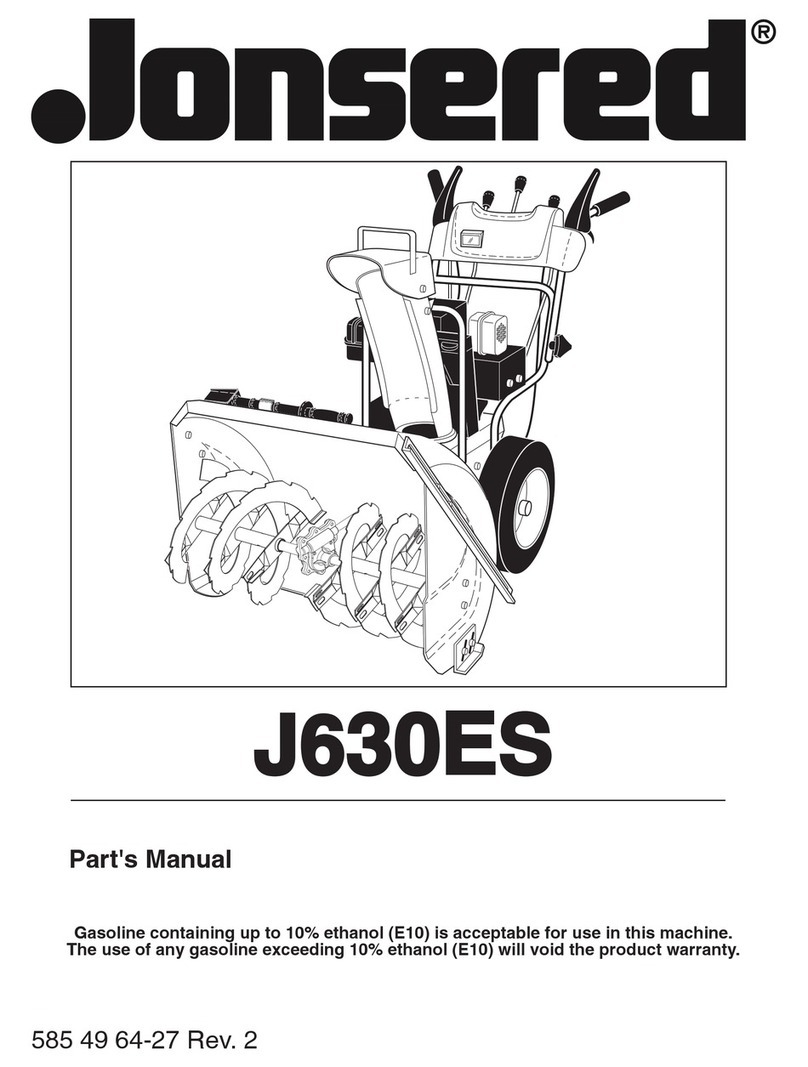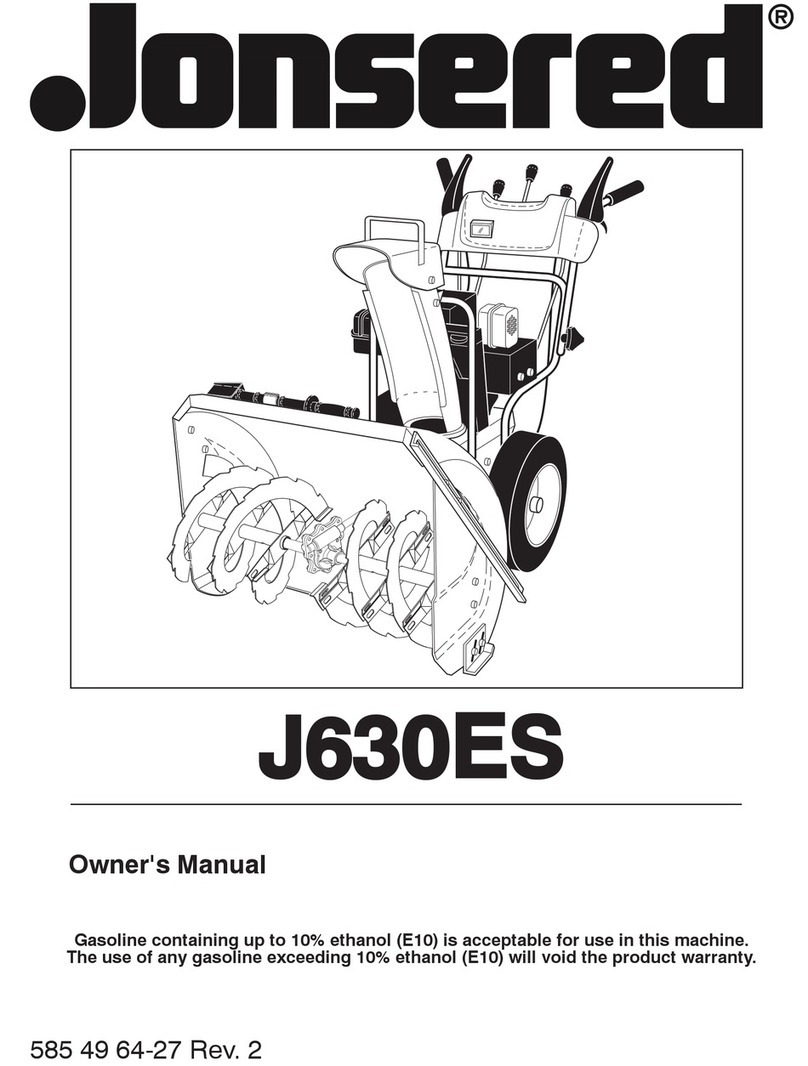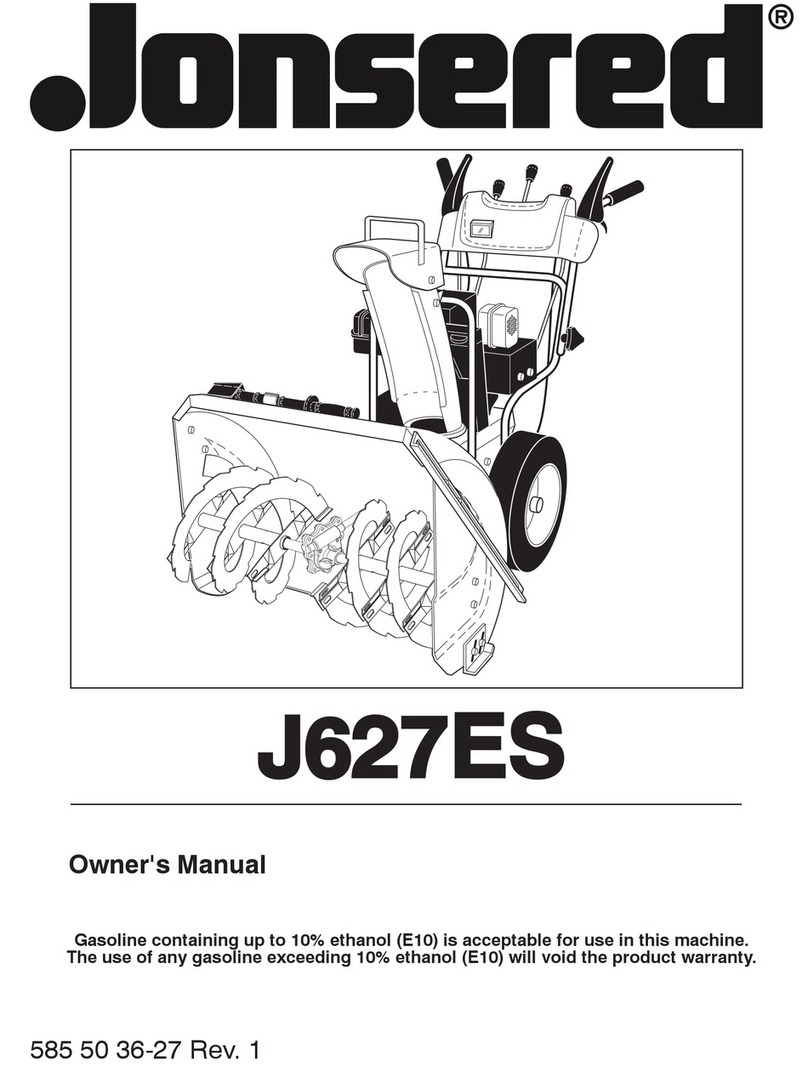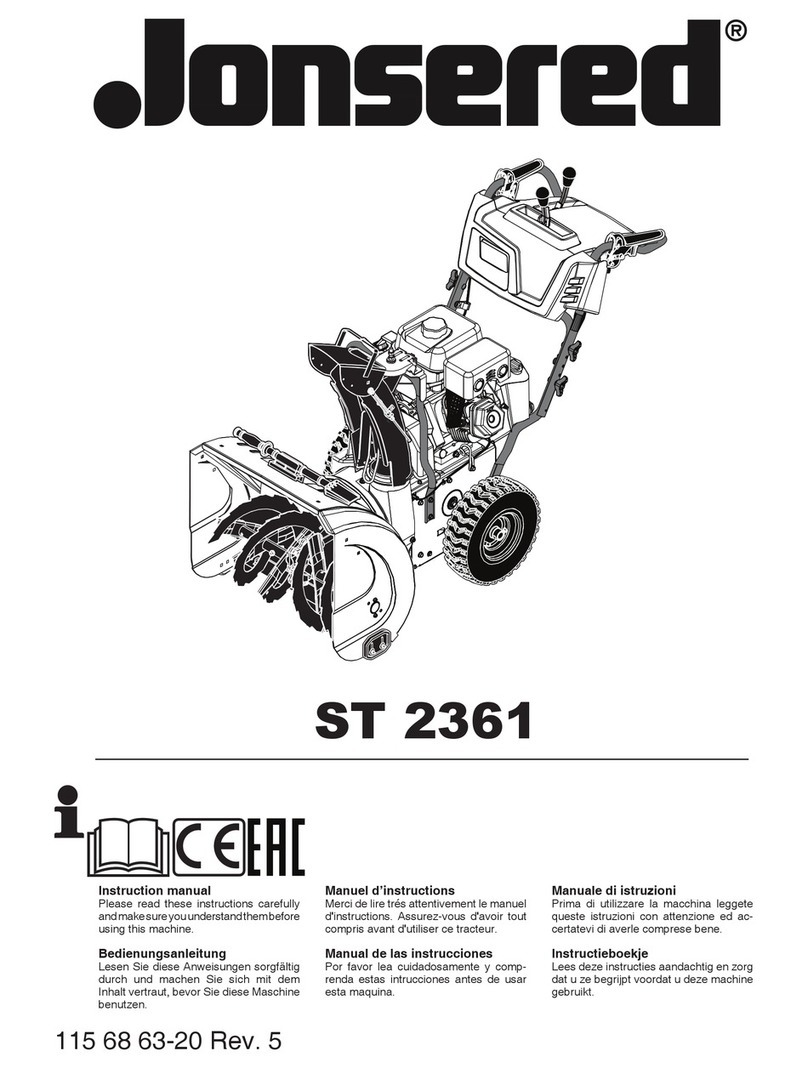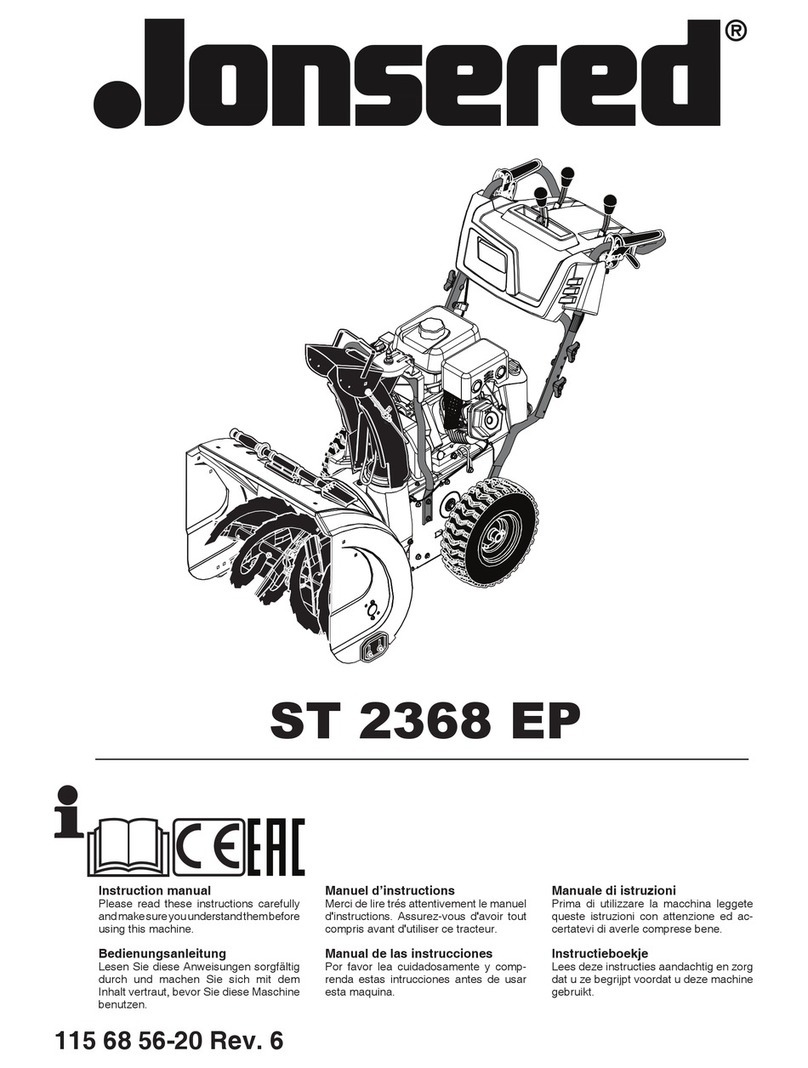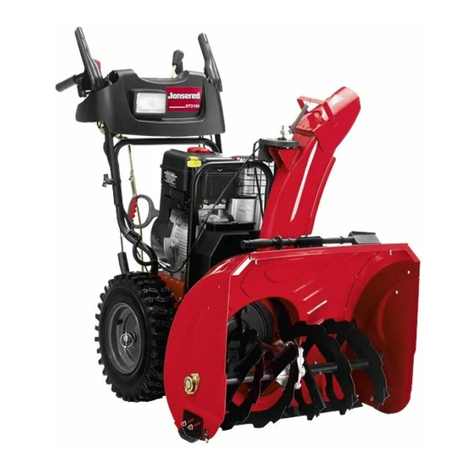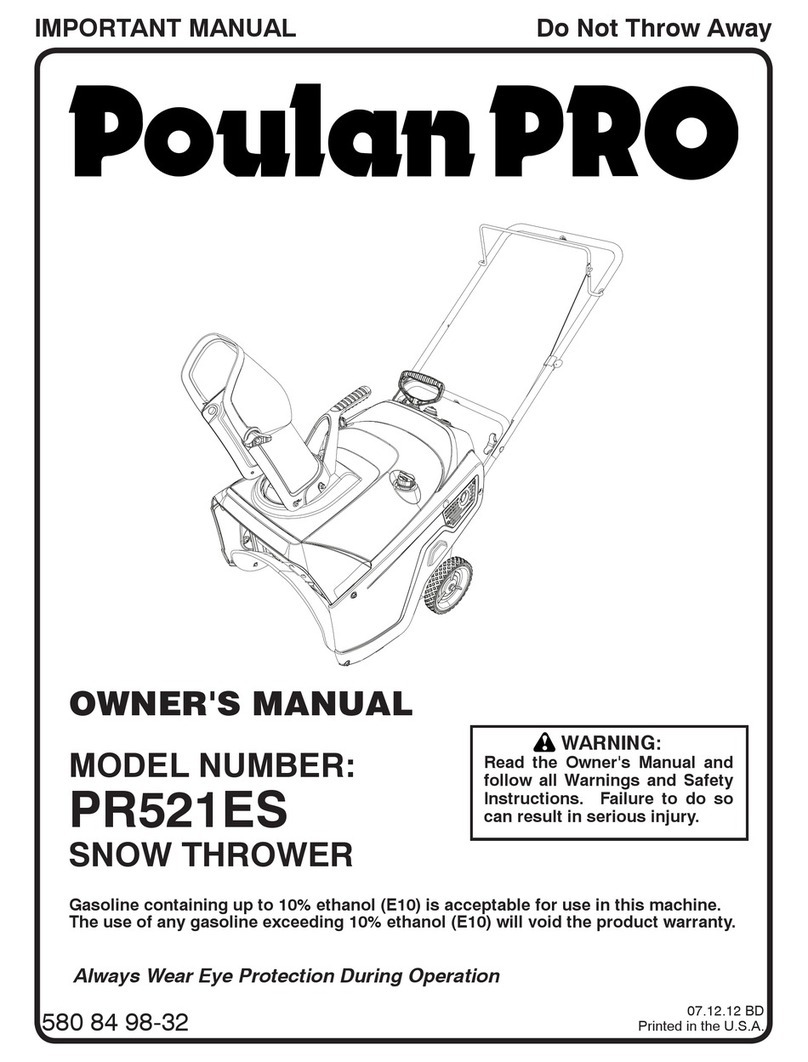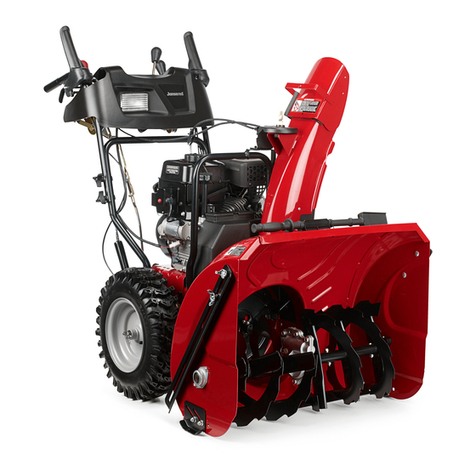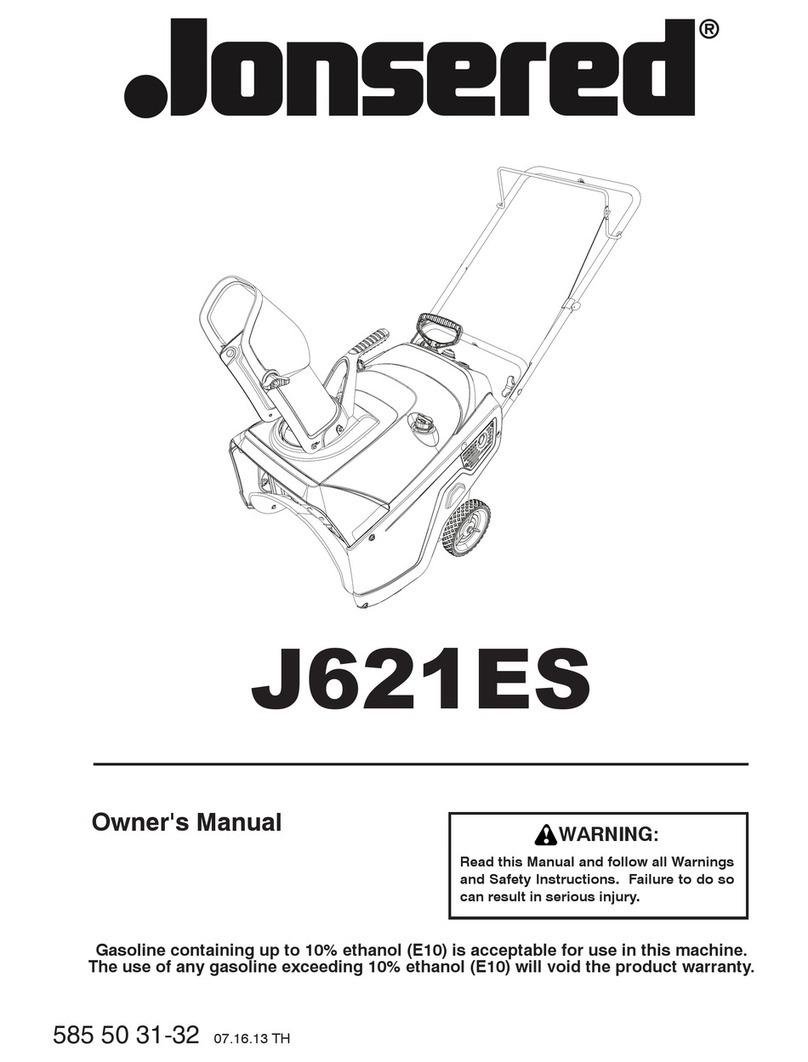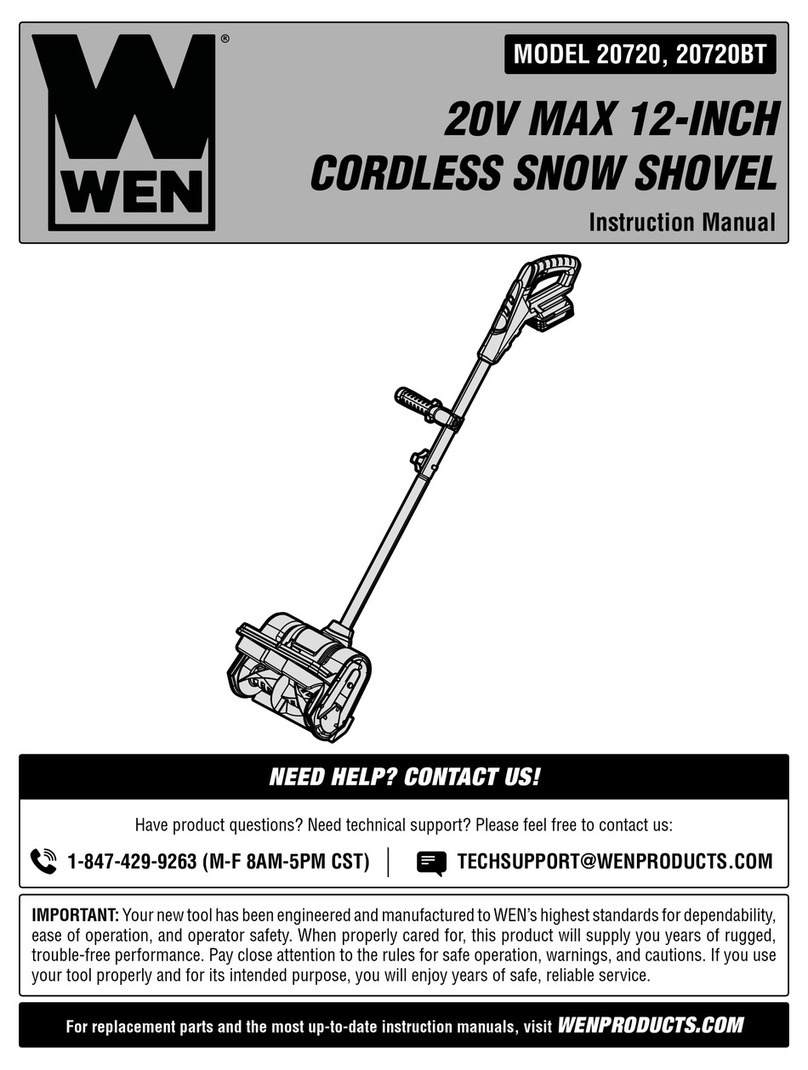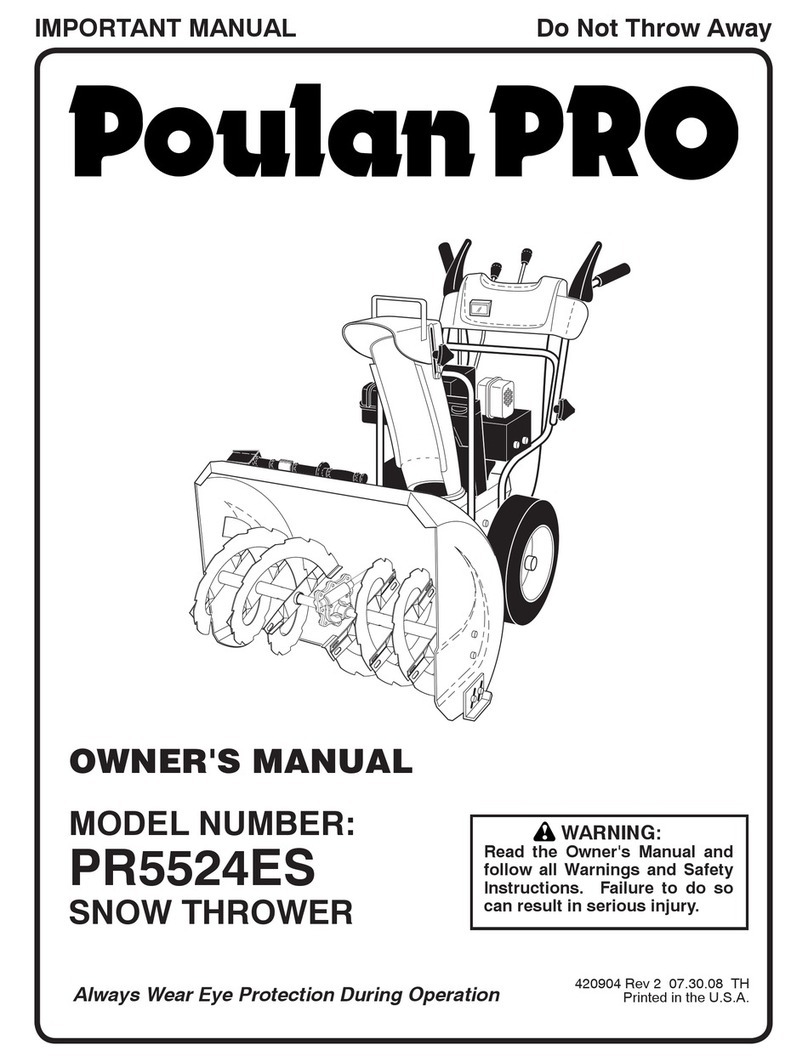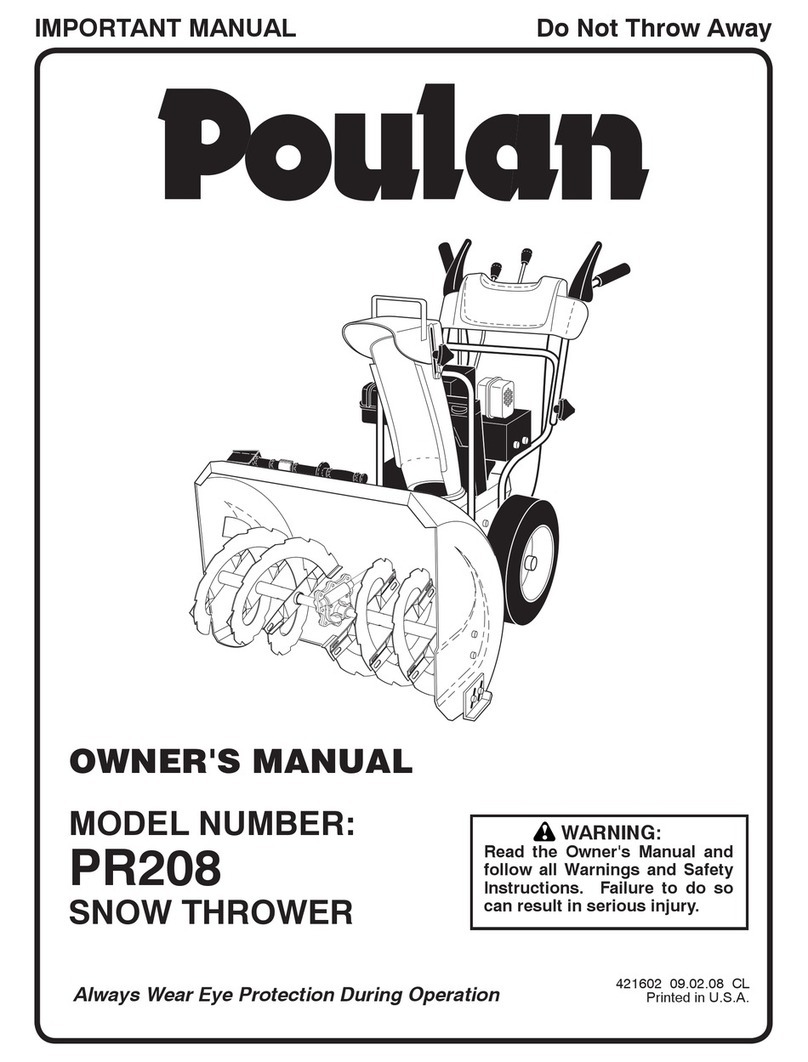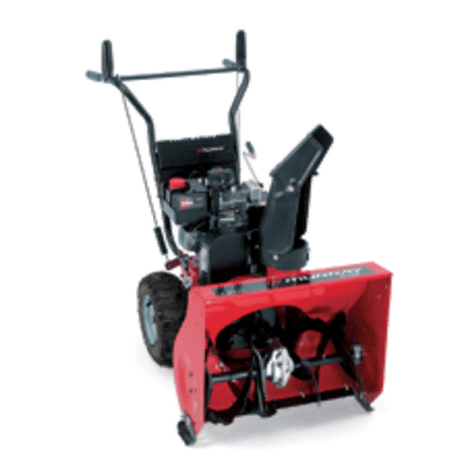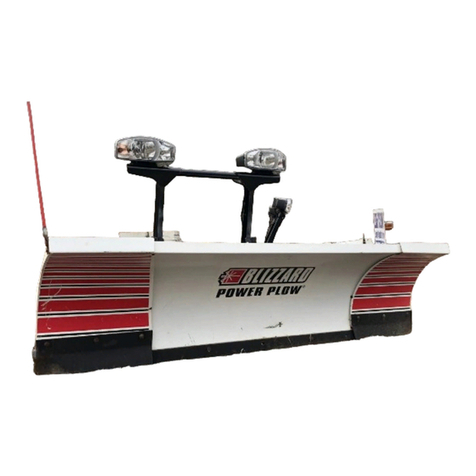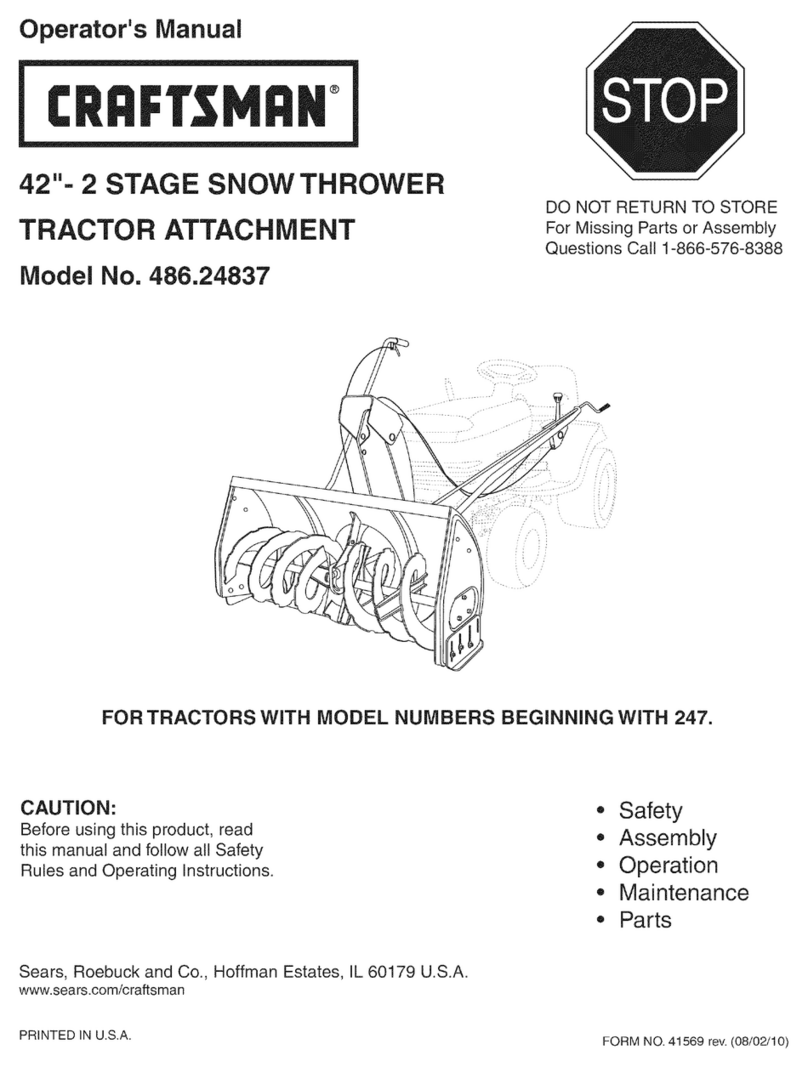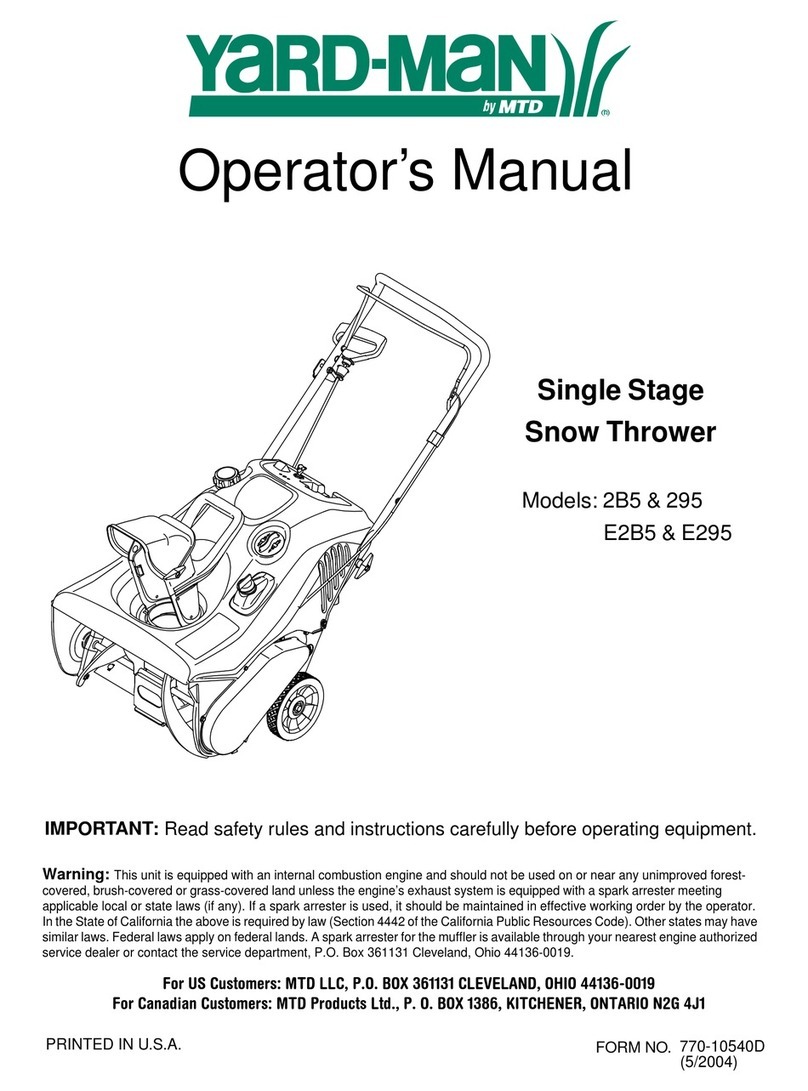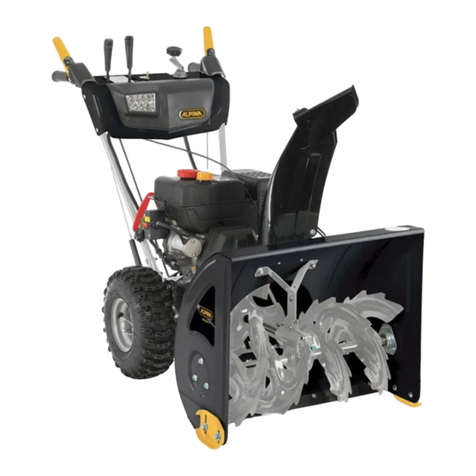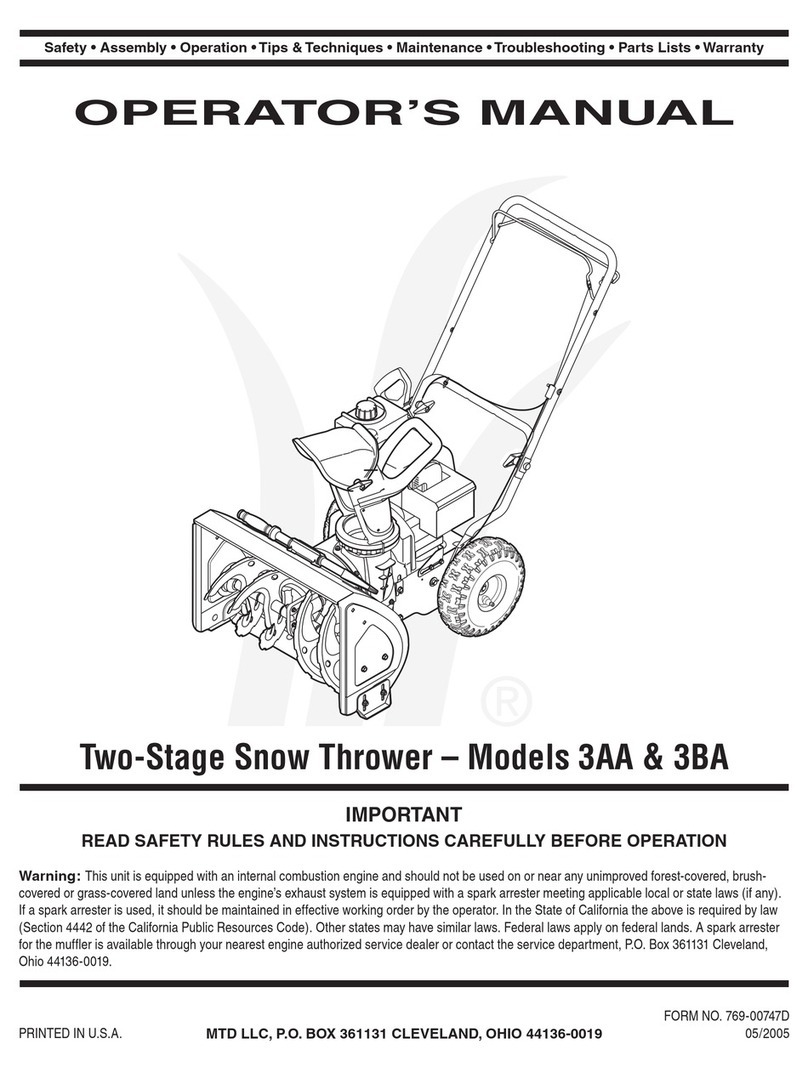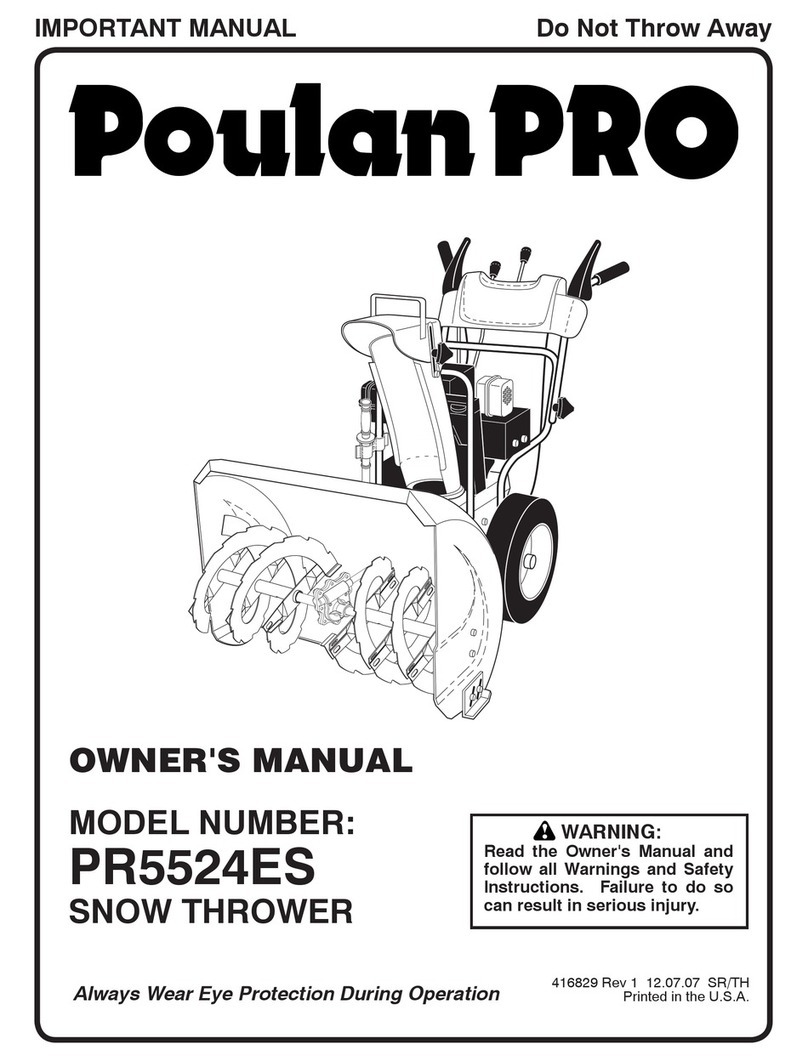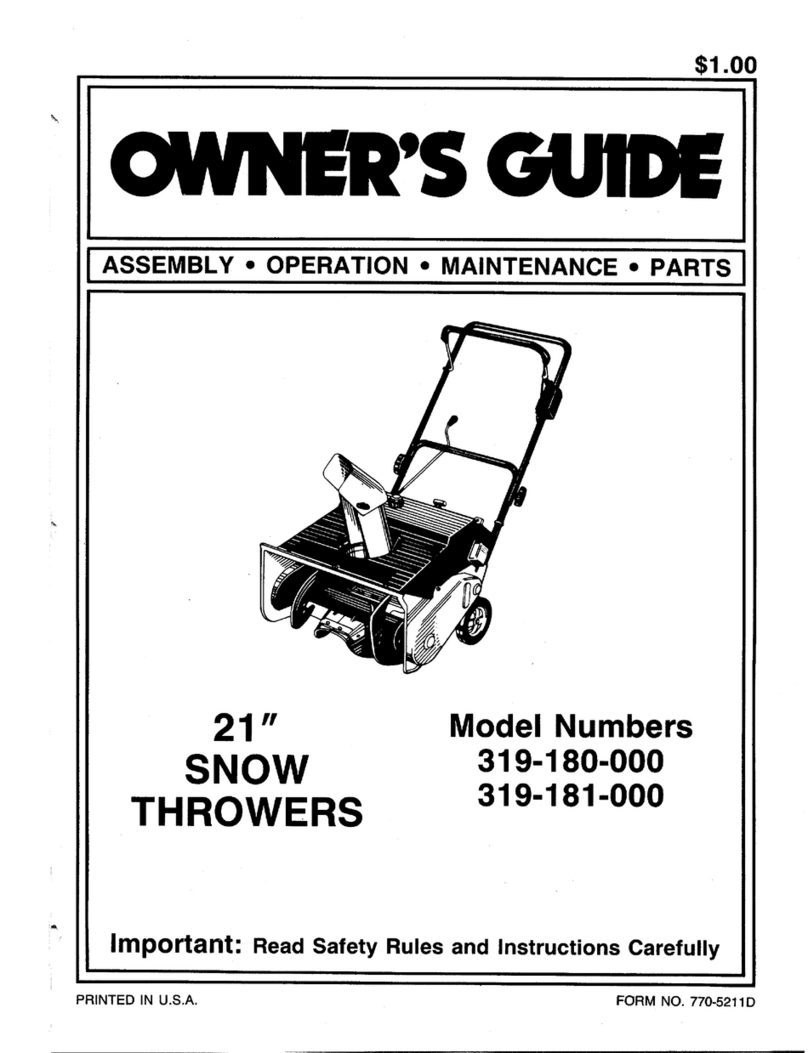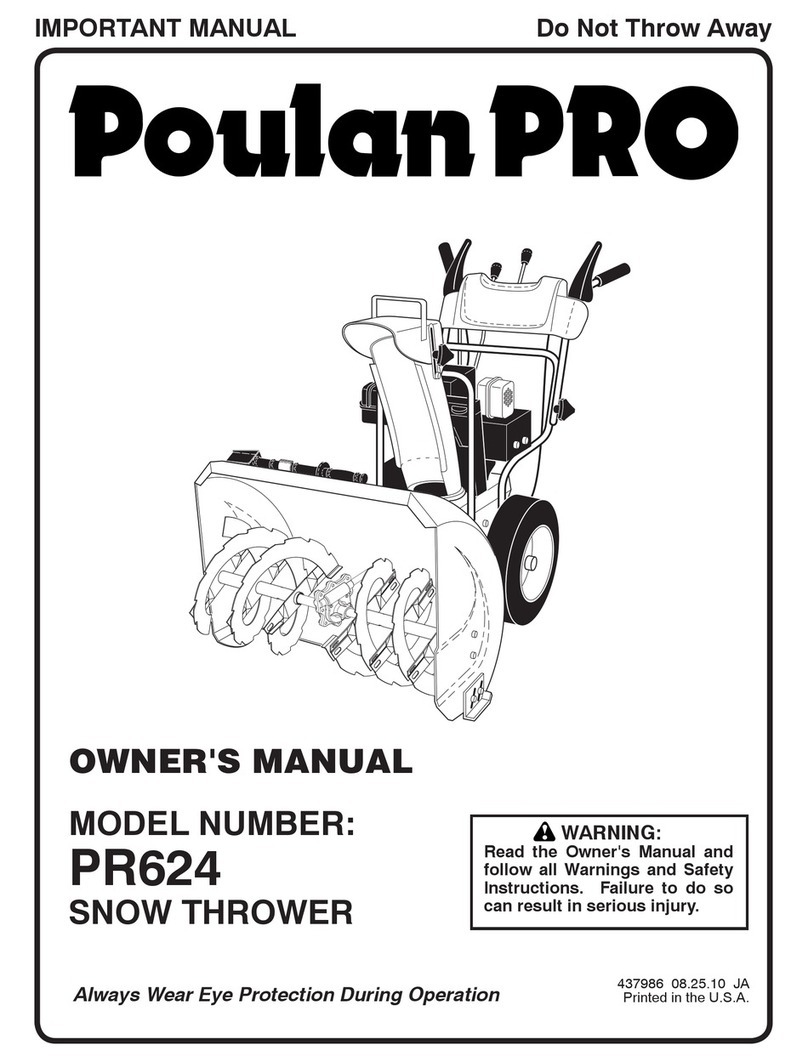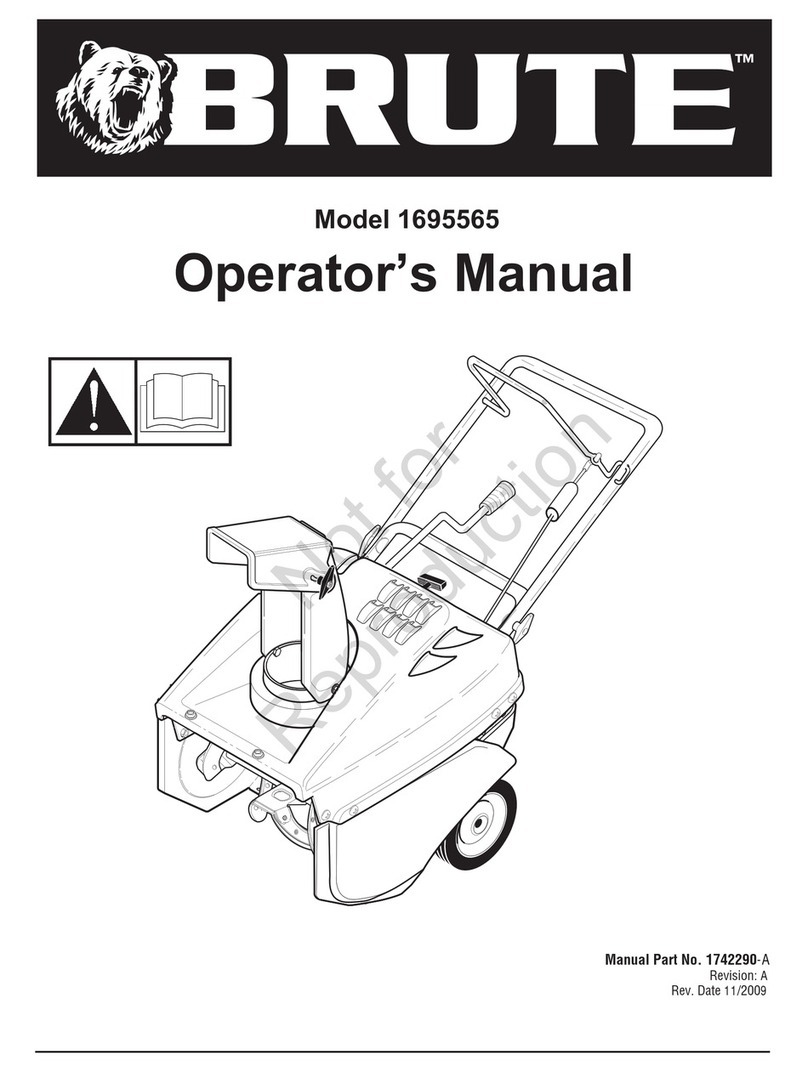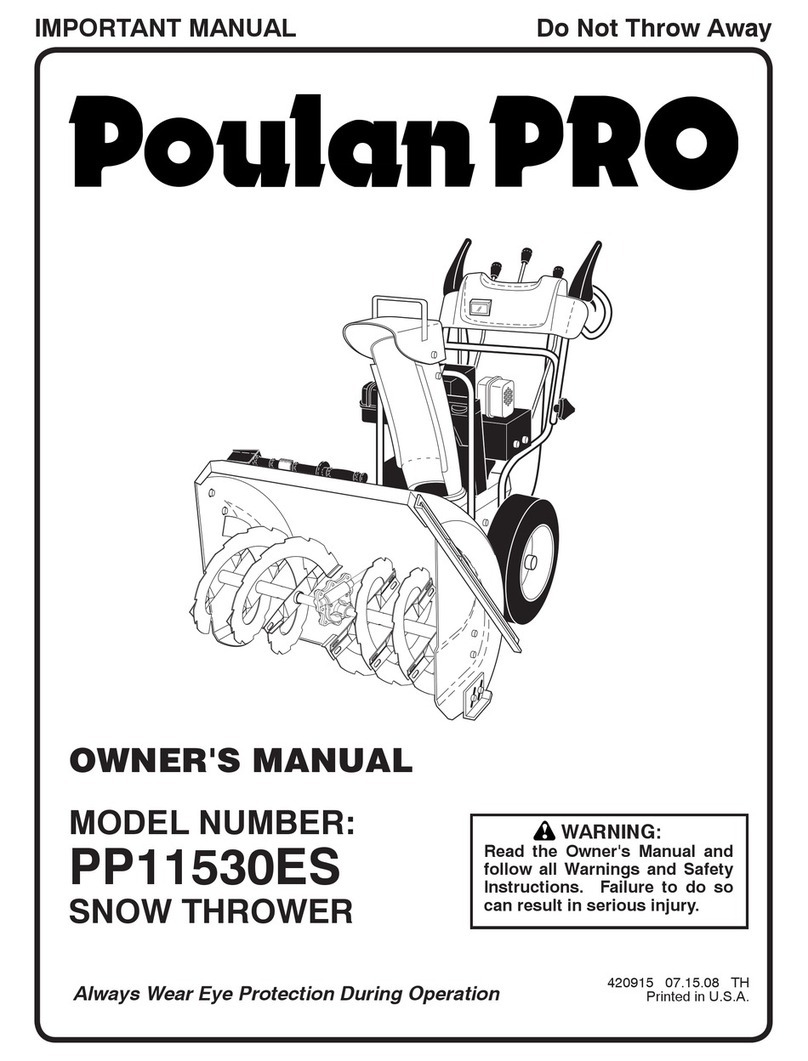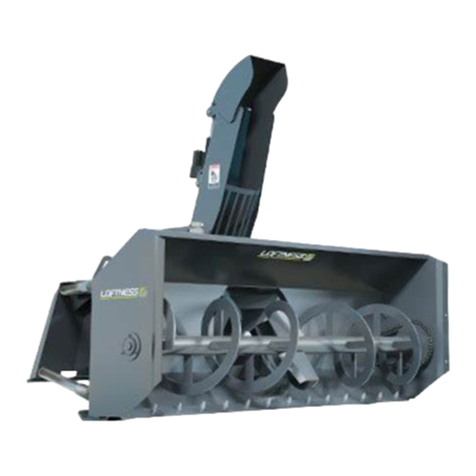
2
Safe Operation Practices for Walk-Behind Snow Throwers
IMPORTANT: This snow thrower is capable of amputating hands and feet and throwing objects. Failure to observe the
following safety instructions could result in serious injury.
(c) Fill fuel tank outdoors with extreme care. Never fill
fuel tank indoors.
(d) Neverfillcontainersinsideavehicleoronatruckor
trailerbedwithaplasticliner.Alwaysplacecontainers
ontheground,awayfromyourvehicle,before filling.
(e) When practical, remove gas-powered equipment
from the truck or trailer and refuel it on the ground.
If this is not possible, then refuel such equipment
on a trailer with a portable container, rather than
from a gasoline dispenser nozzle.
(f) Keep the nozzle in contact with the rim of the fuel
tankorcontaineropening atalltimes,until refueling
is complete. Do not use a nozzle lock-open device.
(g) Replace gasoline cap securely and wipe up spilled
fuel.
(h) If fuel is spilled on clothing, change clothing
immediately.
5. Use extension cords and receptacles as specified by
the manufacturer for all units with electric drive motors
or electric starting motors.
6. Never attempt to make any adjustments while the
engine (motor) is running (except when specifically
recommended by manufacturer).
7. Always wear safety glasses or eye shields during op-
eration or while performing an adjustment or repair to
protect eyes from foreign objects that may be thrown
from the machine.
8. Use ear protectors to avoid damage to hearing.
Training
1. Read, understand and follow all instructions on the
machine and in the manual(s) before operating this
unit. Be thoroughly familiar with the controls and the
proper use of the equipment. Know how to stop the
unit and disengage the controls quickly.
2. Never allow children to operate the equipment. Never
allow adults to operate the equipment without proper
instruction.
3. Keep the area of operation clear of all persons, par-
ticularly small children.
4. Exercise caution to avoid slipping or falling, especially
when operating the snow thrower in reverse.
Preparation
1. Thoroughly inspect the area where the equipment is
to be used and remove all doormats, sleds, boards,
wires, and other foreign objects.
2. Ensure the control bar is released before starting the
engine.
3. Donotoperatetheequipmentwithoutwearingadequate
winter garments. Avoid loose fitting clothing that can
get caught in moving parts. Wear footwear that will
improve footing on slippery surfaces.
4. Handle fuel with care; it is highly flammable
(a) Use an approved fuel container.
(b) Never add fuel to a running engine or hot engine.
CONGRATULATIONS on your purchase of a new snow thrower. It has been designed, engineered and manufactured to
give best possible dependability and performance.
Should you experience any problem you cannot easily remedy, please contact your nearest authorized service center. We
have competent, well-trained technicians and the proper tools to service or repair this unit.
Please read and retain this manual. The instructions will enable you to assemble and maintain your snow thrower properly.
Always observe the “SAFETY RULES”.
Look for this symbol to point out important
safety precautions. It means CAUTION!!! BE-
COME ALERT!!! YOUR SAFETY IS INVOLVED.
WARNING: Always disconnect spark plug wire
and place it where it cannot contact plug in order
to prevent accidental starting when setting up,
transporting, adjusting or making repairs.
WARNING: This snow thrower is for use on
sidewalks,drivewaysandotherground level sur-
faces. Caution should be exercised while using
on sloping surfaces. Do not use snow thrower
on surfaces above ground level such as roofs
of residences, garages, porches or other such
structures or buildings.
WARNING: Engine exhaust, some of its constitu-
ents, and certain vehicle components contain or
emit chemicals known to the State of California
to cause cancer and birth defects or other repro-
ductive harm.
CAUTION:Muffler andotherengine partsbecome
extremely hot during operation and remain hot
after engine has stopped. To avoid severe burns
on contact, stay away from these areas.
WARNING:Snow throwershaveexposedrotating
parts,whichcancausesevereinjury fromcontact,
orfrommaterialthrown fromthedischargechute.
Keep the area of operation clear of all persons,
small children and pets at all times including
startup.
